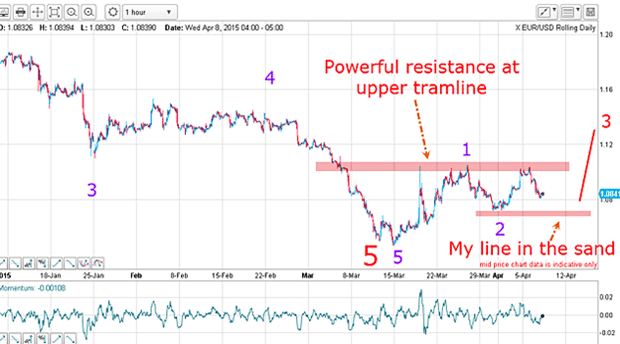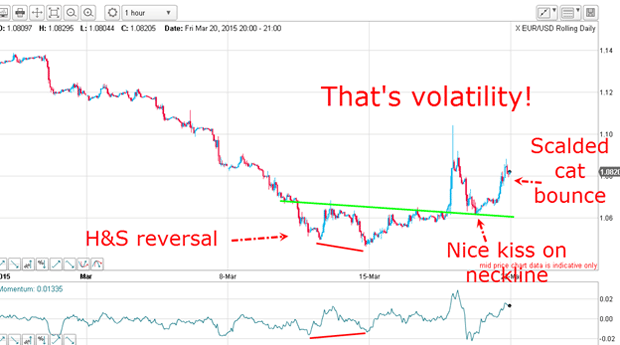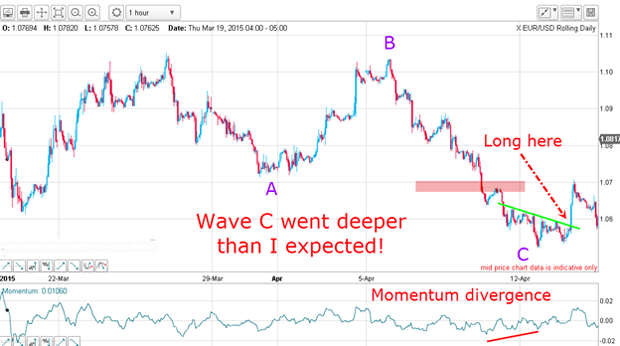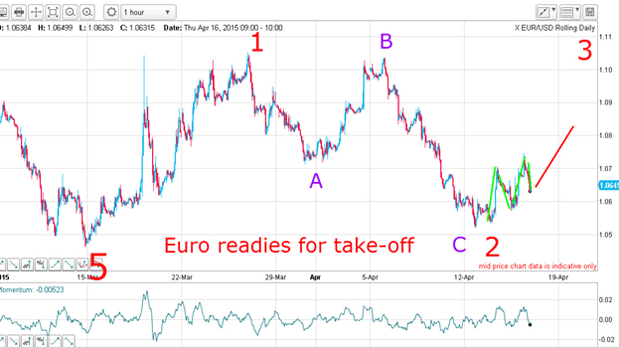Forget the eurozone noise and trust your trading signals
Many traders have a dogmatic view of the markets, not least the euro. John C Burford explains why that's a big mistake.
Currency markets have a habit of moving beyond our best (or worst) expectations, despite our best efforts at pinpointing trend changes. Who would have guessed last year that the US dollar would zoom higher to appreciate by over 20% in just a few months to reach the 100 print?
The EUR/USD moved from 1.40 in May last year to the recent low at 1.05 a decline of 25% in a relentless liquidation of long positions by the army of dollar bears. But in May at the dollar low, it was doomed according to received wisdom.
Clearly, the vast majority were ultra-bearish the dollar last year as shown in the sentiment data I showed throughout the year which of course was a necessary condition for a solid bull market to get under way.
Subscribe to MoneyWeek
Subscribe to MoneyWeek today and get your first six magazine issues absolutely FREE

Sign up to Money Morning
Don't miss the latest investment and personal finances news, market analysis, plus money-saving tips with our free twice-daily newsletter
Don't miss the latest investment and personal finances news, market analysis, plus money-saving tips with our free twice-daily newsletter
And even in the short-term the timeframe that swing traders operate in swings can exceed expectations, and this was vividly illustrated earlier this month.
Bears outnumbered bulls 33-1 my rally was highly likely
,

I had my "line in the sand" as a warning that, if the market broke below that level, my proposed rally would be in jeopardy, not necessarily dead in the water, but certainly delayed.
Remember, I am working from a bullish stance that I explained in my Trader postof 13 March, the very day of the 1.0460 low. This is what I wrote then: "Remember, bear markets always terminate when bearish sentiment is elevated, which it clearly is at present. In fact, the latest DSI (Daily Sentiment Index) showed a 97% bullish dollar reading this week!"
So, with euro bulls being outnumbered by about 33-to-one by the bears, the path was clear for a significant turn.
But just because sentiment was heavily skewed, it doesn't give us licence to jump in with both feet. That is not a reliable winning strategy. Remember, sentiment is not a precise timing tool. I use it in conjunction with my tramline methods, which are precise timing tools.
Perfect trading signals let you forget dogma and focus on the short term
In my postof 23 March, I showed how you can use these precise tramline tools to position yourself in the correct direction and at low risk. On my hourly chart I noted the positive-momentum divergence at the 13 March low and on the immediate rally, I could draw in a nice green trendline across the tops. A buy stop placed just above this green line was the textbook trade. The kiss back to this line on 19 March was another perfect signal.

The key point is that these are traditionally-high probability trade setups and, with protective stops placed just below the green line, two very low risk trades were available. A swing trader can ask for no more.
Just a few of these per quarter-year will allow you to thrive as a trader, provided you also manage your trades well (see later).
One further point: when trading in this manner, you do not have the burden of having to decide whether you are bullish or bearish the euro. You simply follow the sentiment data and your analysis of the charts.
Many traders seem to have a dogmatic view of the markets. If you read comments sections of some blogs I only do it occasionally for entertainment purposes you will see that many who post comments have a visceral hatred of the eurozone. And they translate that into a belief that the euro is doomed as a currency.
The current crisis events in Greece do nothing to dissuade them, of course. If they do trade, they are destined to fail because they will not see what the market is telling them.
I had to be patient, but I got my rally

The strong rally soon after told me I was very likely on the right track and a bigger rally was on the cards.
In swing trading, the management of your trades is critical for your success. You've got into a low risk trade and it is going well. How do you manage it?
One disciplined way is to use my split-bet strategy where you take partial profits at certain milestones. And that is what I did on Friday when the market made a hit on the Fibonacci 62% retrace of the previous wave:

I was long from last Tuesday at the 1.0580 level and exited partially at the 1.0820 level for a very tidy profit of 240 pips in four days. Meanwhile, I have kept the remaining part of my original position and have moved my protective stop to break even.
Even if the euro collapses from here, I am guaranteed a 240-pip profit overall. And if the market does not touch off my stop, I am destined for even bigger profits.

That is a low-stress position for any trader to be in.
Get the latest financial news, insights and expert analysis from our award-winning MoneyWeek team, to help you understand what really matters when it comes to your finances.
John is is a British-born lapsed PhD physicist, who previously worked for Nasa on the Mars exploration team. He is a former commodity trading advisor with the US Commodities Futures Trading Commission, and worked in a boutique futures house in California in the 1980s.
He was a partner in one of the first futures newsletter advisory services, based in Washington DC, specialising in pork bellies and currencies. John is primarily a chart-reading trader, having cut his trading teeth in the days before PCs.
As well as his work in the financial world, he has launched, run and sold several 'real' businesses producing 'real' products.
-
 ‘Inheritance tax insurance’ enquiries are soaring – but is it worth it?
‘Inheritance tax insurance’ enquiries are soaring – but is it worth it?Premiums for whole of life insurance can run to £5,000 a month to cover a £300,000 inheritance tax bill, with policies costing more the older you take them out.
-
 MPs warn over Lifetime ISAs which could leave savers out of pocket
MPs warn over Lifetime ISAs which could leave savers out of pocketThe Treasury Committee has highlighted confusion around the Lifetime ISA withdrawal charge, which risks consumers losing “a significant part of their savings”